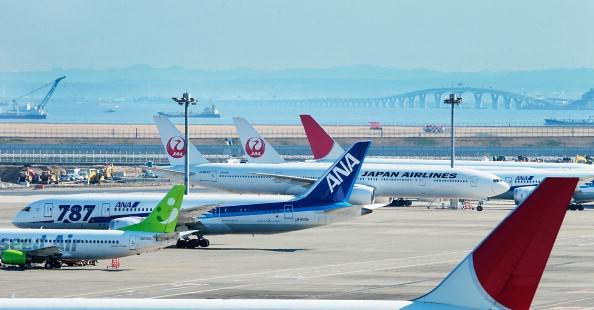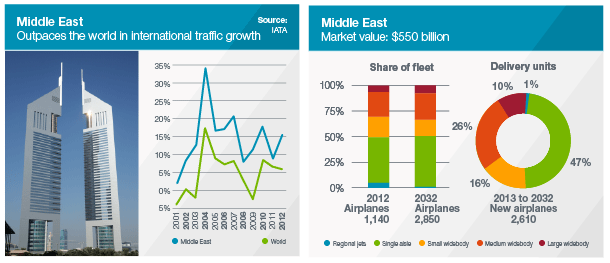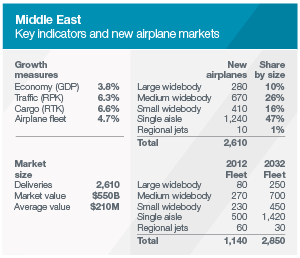Historical Background of Boeing and Airbus
Boeing was established in 1916 in Seattle, US. Today, the company is the world’s largest manufacturer of both commercial jetliners and military aircraft (Boeing 1). The company also designs and manufactures “defense, electronic equipment, rotorcraft, satellites, missiles, launch vehicles, and advanced communication equipment” (Boeing 1). Boeing is the main contractor for NASA and the key partner for International Space Station. In addition to these products and services, Boeing also offers several “military and commercial airline support services” (Boeing 1) in the industry.
The company offers its services and products to clients spread across 150 countries globally. Moreover, it attracts high volumes of exports with the largest revenues in the US. Today, Boeing has over 170,000 workers in areas in which it operates globally and in Chicago where its head office is. Boeing has talented, diverse, and creative employees than most companies globally. Many employees have the advanced and technical knowledge, skills, experiences, and qualifications in different fields. Boeing also takes advantage of other talented suppliers and partners to leverage its operations.
Airbus also claims to be the world’s leading manufacturer of both commercial jetliners and military aircraft (Airbus 1). The company was founded more than 40 years ago in France. Today, it is one of the leading players across Europe with a sizeable share of the global aviation market.
Airbus has about 63,000 workers spread across different sites (16) in the EU bloc (European Union). Today, it has a site in Tianjin, China alongside other offices in the US, India, and Japan.
These two companies claim the world’s leading position. This highlights the fierce rivalry between Airbus and Boeing over the years. This essay focuses on marketing concepts, particularly geographic segmentation, and differentiation as applied by Boeing and Airbus as they scramble for the global market, more so in the Gulf region.
Marketing Environment
Boeing and Airbus have developed one fierce rivalry over the years and it gets worse every year. This has created intense competition in the industry. The aviation industry has experienced rapid growth. However, different factors, such as expanding markets, desire to develop fuel-efficient, green, and sustainable airplanes, the increasing prices of fuels and constant demands from consumers who have the means and will to travel better than ever before, have shaped the competition in the aviation industry.
Not in any market has this competition been fierce and apparent between the US giant and Europe’s Airbus than in the Gulf region or the Middle East. This has happened because of the Gulf’s attractive airlines and its geographical position as the airline transport hub for the globe. To Boeing, the performance has been impressive and simple. It has played the key role as the main provider of commercial jetliners since the 1980s until it relaxed and provided a way for Airbus to cater to the growing demand in the region. However, this did not last for Airbus as Boeing re-emerged to claim its number one position in the Middle East. It overtook Airbus in terms of deliveries and orders for the first time after several years.
The growth of Airbus in the Gulf region has created conditions for customer-focused and innovation strategies in the airline industry. The two giants of the aviation industry have taken their competition on their jumbo jets. Although Airbus has dominated specific stopover routes because of the partnership with Qantas, Boeing has some of the largest and efficient fleets in the region run by Emirates. Boeing and Airbus rivalry will move to their future commercial jets.
Boeing wants to create efficient, comfortable, and economic jets for the Gulf market to compete with previous models of Airbus. Industry professionals believe that Boeing will outdo Airbus in the region. On the other hand, Airbus announced a deal with Qatar Airways. This confirms and reinforces the need to capture the vibrant Gulf market. While the Middle East has provided a battleground for geographical segmentation and differentiation, it will ultimately define the king of the aviation industry in the next few years to come.

Marketing Concepts
Globalization and geopolitical trends have shaped commercial aviation. As a result, Boeing and Airbus have resorted to geographic segmentation to acquire the largest market share of the aviation industry. According to Boeing, its business is “global in every respect” (Boeing 1). Its supply chain covers several continents. Boeing delivers commercial airlines to many customers outside the US market, who are spread across the world. Hence, the industry is complex and competitive. As a result, Boeing strives to understand its market, political, and economic trends. Also, it aims to support social and public policies and create jobs in the aviation industry. The Middle East provides a good case of geographical segmentation for the two leading companies in the aviation industry.
According to Ian Gold, Airbus’ forecast shows that the Gulf region will shape the aviation industry in the next two decades (Goold 1). The forecast indicates that Airbus share will grow faster in the region than in any other geographical segment of the global market within the next 20 years.
Major aviation firms have focused on the Gulf region because governments in the Middle East have recognized the potential of the aviation industry through job creation and economic growth. Air traffic in the Gulf region has doubled in the last ten years. Moreover, global and regional airline carriers would also grow considerably. They have embarked on massive investments with billions of dollars involved to cater to the rising demands and the Gulf region desires to be the global transport hub.
The Airbus forecast shows that the growth in the Middle East is the fastest in the world. The Gulf region governments have fuelled the growth through massive investments in airport infrastructures to position the region as the best hub in the world. The key markets include the Gulf States, Arab nations in North Africa, Iran, and Afghanistan.
To meet the predicted demands, the region would require many commercial aircraft in the next 20 years. In the past 20 years, the number of commercial airlines with more than 100 seats has increased threefold in the Middle East. The industry has attracted heavy investment, which has improved the average age of commercial airplanes.
Over half of commercial airplanes operate on medium-haul and long haul routes. This is a global strategy, which the Gulf States have embarked on to attract modern and high capacity aircraft. The region has also recorded significant improvement among airplanes that offer short-distance services. Low-cost carriers have facilitated the growth in short distance markets.

The Gulf market is a diverse region, which presents massive opportunities for the aviation industry because it has some of the fastest-growing economies, as well as economic and geopolitical challenges. Despite these difficulties, several governments within the region have acknowledged the rising demands of commercial aircraft within the domestic and international spheres. As a result, investment in the aircraft industry has become a major strategic economic plan in the region to shape their present and future networks.
The government efforts have achieved remarkable growth in the airline industry in the past few years. Consequently, regional carriers have focused on exploiting these opportunities by expanding their carriers, both short hauls, and long hauls.

The aviation industry has acknowledged the unique geographical position of the Gulf region, which has provided opportunities for local carriers to attract and cater to travelers from across the globe needs. They have also recognized the intraregional growth among local carriers. Commercial aircraft manufacturers note that the Gulf region market has experienced such rapid growth because of a young, diverse population. These people share a common regional language, work, and prefer leisure chances within or outside the Gulf region.

Emerging Markets
Boeing and Airbus do not only scramble for the Gulf region, but they have also identified other regions, which will require additional flights in the next few decades. Countries in the Middle East, Asia Pacific, and Latin America will record higher than average growth in their aviation industries. These markets are critical for the two companies because of the fast-growing economies and the desire to travel among the rising middle class. Consequently, airline companies want to maximize their revenues from these factors.
The airline industry is keen to understand the trend, market conditions, and traffic flow forecasts. These factors evaluate origin and destinations, demands among customers, and city pairs, common routes.
Table 1: Boeing forecast 2013 – 2031: $4.5 Trillion Market for 34,000 New Airplanes.
Airbus and Boeing have acknowledged that the previously ignored markets of developing nations shall lead the aviation industry and define its future.
Although developing countries shall provide huge markets for the aviation industry, from the table above, it is clear that both Boeing and Airbus cannot ignore their advanced markets in North America and Europe because these markets shall provide over 60 percent of their global market shares.
Boeing expects to earn $4.5 trillion from 34,000 new aircraft by 2031 (Boeing 1). On the other hand, Airbus aims for “$4.4 trillion with 29,226 new commercial airplanes and 871 cargo airplanes by the year 2032”’ (Goold 1). These orders consist of airplanes of different sizes and models. The figures confirm a fierce rivalry between Boeing and Airbus not only for the Gulf market but also for the entire world aviation markets. At the same time, the figures also show that the two companies have a close or consistent judgment about the aviation industry globally. Airbus notes that carriers have focused on acquiring airplanes with large sizes for their backlog. On the same note, aircraft manufacturers want different ways of adding the number of seats to available airplanes or develop new aircraft of large sizes with additional seats to meet the current demands.
The global market forecasts reflect views of Airbus and Boeing based on key drivers in the air transport market, economic, geopolitical, and operational factors within the next 20 years (Goold 1). They have also accounted for behaviors of passengers, potential implications, and new demands by carriers. For instance, carriers and manufacturers want to understand small details involved in passengers’ movements from the beginning of the journey to its end.
Both Airbus and Boeing have shown confidence in the market despite the recent events in North Africa, some parts of the Middle East, the Euro crisis, and the global financial crisis. While some parts of the world experienced “social challenges and slow economic growth, the airline industry has continued to grow” (Goold 1). The growth was attributed to increment in economic activities, changes in demographic characteristics, achievements in social activities and the ability of the airline industry to satisfy the needs of passengers.
The airline industry has facilitated movement across different geographies. Hence, people can choose their workplaces, where to conduct their businesses or live. The airline industry also considers factors related to urbanization, availability of disposable income, accumulation of wealth, and consumers’ spending habits. All of these factors influence the growth of the aviation industry. Amidst this intense competition, aircraft manufacturers must differentiate themselves across different geographical regions through innovation and technologies, which will shape the future of the airline industry for the coming decades.
Differentiation
In today’s aviation industry, a clear difference among competitors has become almost unnoticeable. However, Boeing and Airbus have focused on functional product differentiation to define their aircraft as the best in the market.
Boeing concentrates on delivering functional airplanes through technology and innovation instead of economies of scale through large aircraft, which Airbus plans to build. In this case, Boeing will make green aircraft, highly fuel-efficient engines, and lightweight aircraft with sleek designs. Moreover, Boeing would want passengers to have unique traveling experiences by providing comfort during traveling instead of benefits, which carriers can withdraw at any time. These comforts include headroom, bathrooms, large windows, and favorable humidity. These are fixed components, which passengers will experience irrespective of the seat. Boeing believes that it relies on marketplace insights to develop its products. The strategy considers the design of manufacturing airplanes that eliminate unnecessary intermediate stops. At the same time, the airplane must be efficient, offer optimal comfort to travelers, and be cost-effective and easy to operate and maintain (Babej and Pollak 1).

Conclusion
Boeing and Airbus rivalry remains one of the most intense battles, which has attracted the attention of professionals, analysts, and academics. It is also the most intriguing battle in the aviation industry as both manufacturers segment their global markets geographical and product differentiation.
It appeared that Airbus had gained an edge in the Gulf region, but Boeing re-emerged to claim its position. Observers believe that the Gulf region will define the next industry leader in the aviation industry in the next 20 years.
It will also identify a manufacturer, which understands its market, customers, technology, and innovation.
Works Cited
Airbus. Airbus History. 2014. Web.
Babej, Marc and Tim Pollak. Boeing Versus Airbus. 2006. Web.
Boeing. About Us. 2014. Web.
—. Current Market Outlook. 2014. Web.
—. Geopolitical Trends. 2014. Web.
—. Middle East: Long-term market. 2014. Web.
Churchill, Neil. Boeing Vs Airbus: The Grisly Battle For The Gulf. 2013. Web.
Goold, Ian. Airbus: Middle East Will Increase World Traffic Share. 2013. Web.